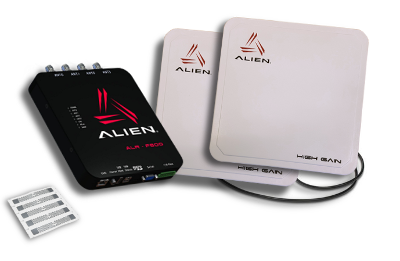Getting started with RFID
Getting started with RFID? - a basic guide to RFID technology for those new to it
I'm sure you've heard that switching to RFID allows you to load and unload in seconds, that you can track down missing item in your warehouse in half a minute, and that you can save up to 30% on warehousing or production monitoring costs. Yes, RFID can do all this for you. But you also need to know some things up front in order to choose exactly what you want, possibly avoid mistakes or even find out if and when the investment is worthwhile in your case.
What can RFID do for you?
- Faster handling of goods and elimination of errors
- Automatic mass scanning of objects
- increase savings by reducing incorrect deliveries
- reducing overall costs
- accurate warehouse information, inventory management
- protection of goods against theft
- monitoring work in production
- additional information refinement
- retrieval without direct visibility
- multiple scanning at the same time
- Resistance to temperature, humidity and environmental influences and production processes and technologies
- multiple times the information carrying capacity
What material "gets along" with RFID?
Ideally, RFID should be used in industries where the product and its packaging are "transparent" to RFID, so that all the goods on a pallet can be read with a single antenna. Suitable materials are non-conductors. Everything that the RFID waves pass through can be tagged without any problems. Ideally paper, plastic, wood, glass. On the other hand, metallic materials and most liquids can pose problems. With the increased use of RFID in the automotive industry, there has been a push to seamlessly read metal components. The result is a tag with "spacing", i.e. a small layer of non-conductive material that allows the tag to function even on metal. Such a label can also be used on some liquids. Another way is to use not labels but tags. Tags can have different ways of attachment, for example, a wire tag, self-stretching tape or adhesion with glue or silicone. Nevertheless, it must be taken into account that although a suitable way to mark and read a metal product has been found, the tag hidden behind it is invisible to the antenna. Then it is necessary to read from multiple sides, i.e. add antennas. Sometimes it also helps to change the moment of reading when the antenna still sees all products or even to change the reading time or to change the packaging when shipping. Still, there is a solution to most problems in RFID.
Stickers or tags?
A smartlabel is a sticker with a chip and antenna that is printable in an RFID printer. It can therefore also carry a classic code, like an ordinary label. It is suitable when part of the chain is not yet working with RFID technology. Labels can also have a user bank - a memory section where you can write. Or, conversely, you are working with a unique number that is carried by either a label (smartlabel) or a tag.
Tags do not carry any external resolution. They come in different shapes and sizes. The above labels and tags do not contain a battery. They are referred to as passive. However, some tags contain a battery and are referred to as active. This significantly increases the reading distance. Maybe 50 metres or more.
What frequencies are used in RFID and in what fields?
- LF frequency (125 + 135kHz) - little used, maximum range 50 cm, mainly used for entrance security or as identification cards for employees or customers.
- HF frequency (13.56 MHz) - range up to 30 cm, used for entrance security or cards, but also partly in industry as a marking of parts in production. Currently, the NFC standard under HF is being extended for payment and identification in mobile phones.
- The UHF frequency (860-960 MHz) - was the first to receive international standardization and thanks to this unification many manufacturers around the world have started production. It has become widespread and relatively inexpensive. The second advantage is range. A large antenna (25 cm) can see a larger tag (8-10 cm) up to 15 meters. But the standard range is in units of meters. It has become the most used in the shop, but maybe also in tracing or in production. Most RFID solutions at Codeware are tied to the UHF frequency.
- Microwave frequency (2.45 and 5.8 GHz) - basically unused, range about 2 meters, expensive hardware.
Why choose CODEWARE?
As one of the first in the Czech Republic we have been dealing with RFID since 2006. Our engineers and programmers can create turnkey solutions, of which we have already created around one hundred. In addition, we can supply customers with hardware and software for their needs and as components of complete solutions. So don't hesitate to contact our sales people, they will discuss your requirements with you and propose a solution.





